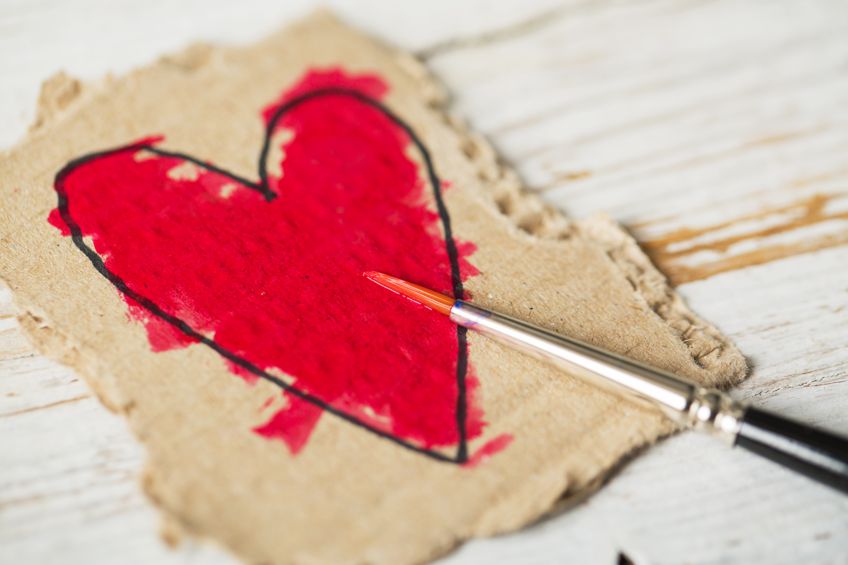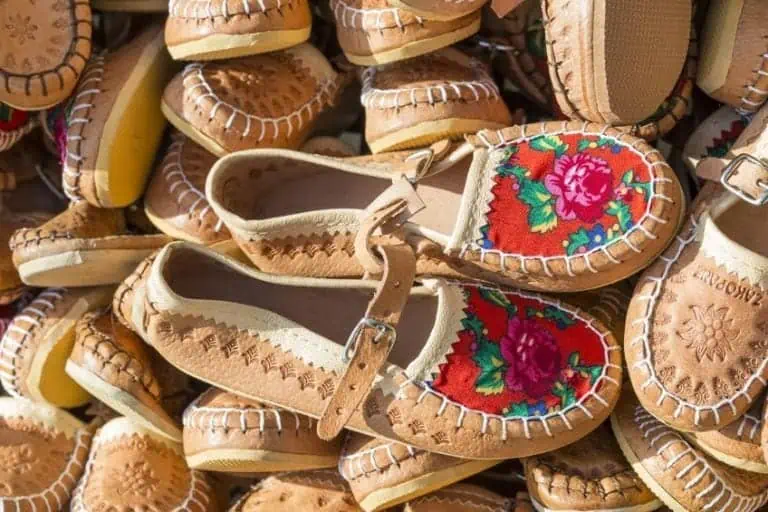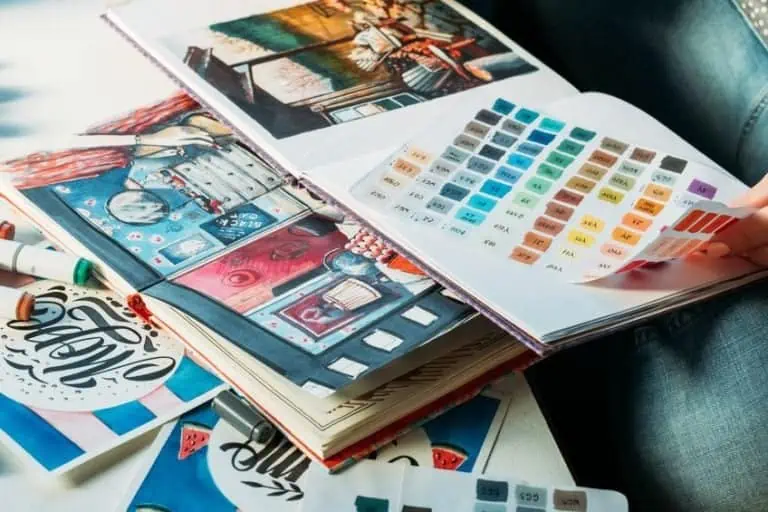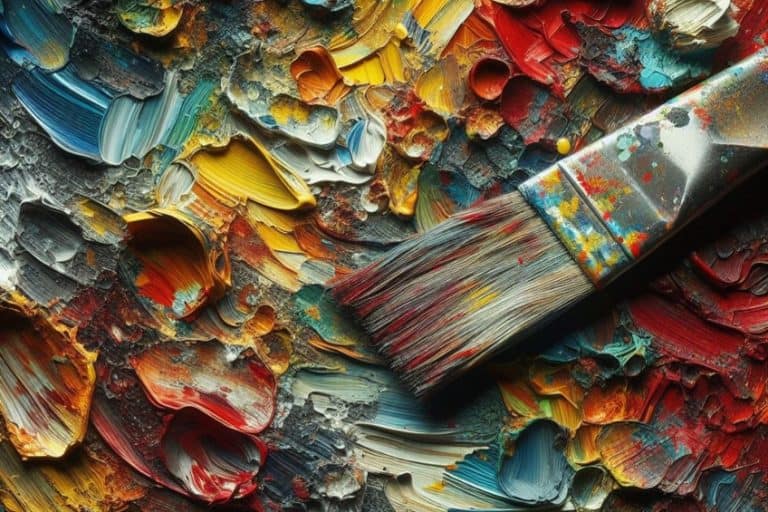How to Paint Cardboard – Exciting Ideas for Cardboard Painting
This post may contain affiliate links. We may earn a small commission from purchases made through them, at no additional cost to you.
Cardboard is a versatile item that is commonly used in packaging and storage. However, cardboard can be repurposed or reused in many ways. One of the simplest ways is painting on cardboard, with many ideas for creating unique art and crafts. Even if it does not work out, it will not cost you a lot of money. Even though cardboard painting is easy and cheap to do, you still need to follow a few steps so that the painted cardboard will last. In this article, you will learn not only how to paint cardboard, but we have also included a few best paints for cardboard and some creative ideas.
Table of Contents
Why Should You Try Cardboard Painting?
The most obvious reason for creating cardboard art projects is that it is a cheap alternative to more expensive options. Painting on cardboard can be cheaper than using canvas or other expensive paper. Cardboard is also easy to get hold of and is a great way to repurpose old cardboard pieces. Both young and old can do cardboard painting, and if you make any mistakes or the cardboard is damaged, you can simply start over on another piece.
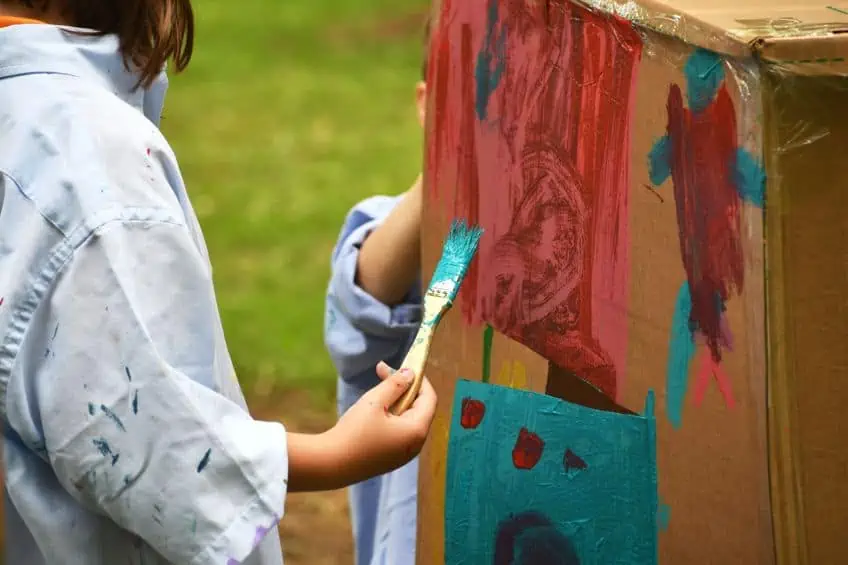
Cardboard is easily shaped and cut into any size you want, and it is lightweight, so it is easy to carry and work with. Cardboard can easily be used to simply paint on, but since it can be shaped easily, there are many other craft projects you can try. For example, building a dollhouse or other ideas for kids. You can even try creating functional items like coasters, signboards, toys, bookmarks, gift tags, or boxes, or create a new look for a storage container.
The recommended cardboard for painting is the double-wall as well as the triple-wall corrugated products. However, you can easily use whatever cardboard comes as packaging for your new fridge or other items. Since you might have cardboard lying around, it is perfect for the kids to paint on besides paper. Just remember that when you are done with the cardboard and you do not wish to use or keep it anymore, recycle it.
Cardboard can then easily be made into new cereal boxes, paper towels, paper, or more cardboard.
The Best Paints for Cardboard
We have already established it is cheap and easy to paint cartons and cardboard products. However, the cartons with a wax type of seal over them cannot be painted, it is the bare cardboard that works. Since cardboard is made from paper pulp materials, also known as kraft paper, it tends to wrinkle and warp if there is too much water or moisture applied. This is why when painting on cardboard, you need to follow a few simple instructions and use the correct type of paint.

Oil Paints for Cardboard Art Projects
Oil paints are also an option for cardboard painting. As with acrylic paints, oil paints have a thick consistency. However, oil paints offer more vibrant colors. However, there are also disadvantages to oil paints. For one, they are more expensive than acrylic paints and some paint pigments can be toxic. You also need mineral spirits or turpentine to clean up afterward. As with acrylics, you should use thin layers of paint as a thicker paint layer can warp the cardboard.
It is also a good idea to add a primer onto the cardboard surface before painting, wait for that to dry and then apply a thin layer of paint, and wait for it to dry before painting more layers.
Acrylic Paints for Cardboard
This is the best choice when it comes to cardboard painting, as the paint is affordable, less toxic, and easy to use. Acrylic paints are also versatile and can be applied to different surfaces including cardboard, canvas, wood, metal, ceramics, and more. The paint consists of a pigment that is suspended in an acrylic polymer emulsion and is soluble in water when wet. However, once dry, it becomes water-resistant and forms like a plastic film. Acrylics usually have a thick consistency, so they should not soak into the cardboard surface.

However, there is still moisture involved, which can warp the cardboard if not careful. Thicker layers of acrylic paint might cause warping, even if the surface has been primed. Try to apply thinner layers and wait for every single paint layer to dry before moving on to another coat. Also, do not dip the paintbrush in water too much. Try not to squeeze the acrylic paint from the tube straight onto the cardboard, as it could leave patches of moisture. Once you are done painting, it is easy to clean everything up with a little water.
Spray Painted Cardboard
Spray paint is an easy way to cover larger areas of cardboard, for example, spray paint cardboard box items. The spray paint also has the fastest drying time when compared to the other paints. Once applied, it generally takes about 15 minutes until the paint dries. The spray paint should not warp the cardboard if used correctly; however, the cardboard should lay flat while spraying to avoid breaking it. Spray paints come in different finishes and can easily reach places that a paintbrush cannot. As mentioned, you must apply the spray paint properly to avoid any problems. First, you should spray the paint outside where you have enough air circulating. This is to help you avoid the toxic fumes or overspray that can occur.
When spray painting, you should also wear a mask and gloves for protection. Place some newspaper or tarp underneath the cardboard to prevent messing too much.
Make sure to shake the spray can before using it and hold the spray paint about 12 inches from the cardboard surface. Spray one or two quick, light coats, so there is less moisture that could seep through the cardboard and cause warping. Make sure the paint dries for around two hours before applying your next layer of paint. It is always best to use a layer of gesso or primer before you paint to help avoid any problems.
Is a Primer Necessary Before Painting Cardboard?
We have mentioned using a primer when applying paints for cardboard, but is this necessary? Cardboard can be quite delicate and cannot handle moisture and can therefore not tolerate paints without causing damage. If you are simply playing with the kids and plan to get rid of the cardboard afterward, then using a primer is not necessary. However, if you want your paints to remain on the cardboard and not cause any problems, a primer is needed. When you paint directly onto cardboard, it can absorb a lot of the paint. This is what causes the warping; however, it also affects the color quality of the paint, making it appear dull. You will need to apply more layers of paint, which not only damages the cardboard but also use more paint. So, applying a primer to your cardboard surface is advised.
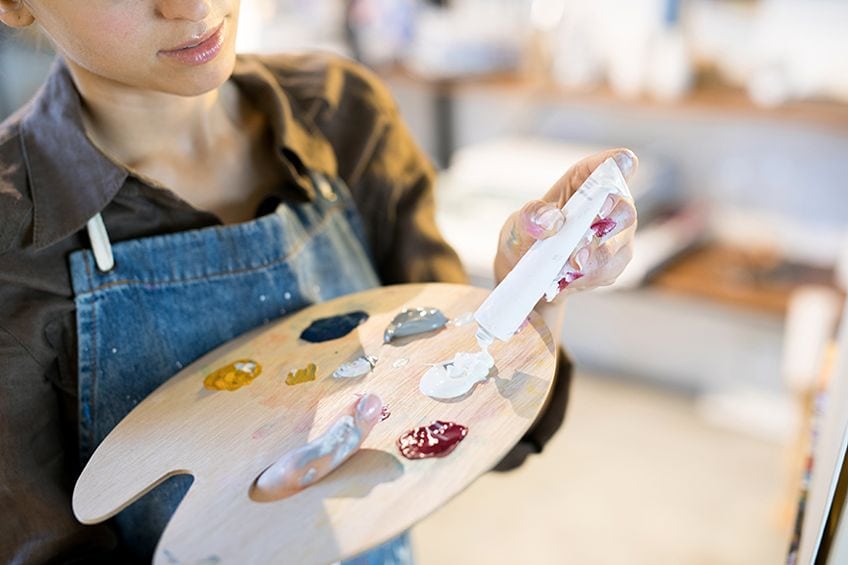
The primer helps to prevent the cardboard from absorbing too much of the paint and provides a nice opaque effect. Applying a primer also helps you to use less paint without affecting the vibrancy of the colors. White acrylic gesso is recommended as a primer for cardboard and is easily obtained from any craft store. You can also get various tinted colors of gesso if you do not want plain white. If you are adventurous, you can create your own gesso using chalk or talcum powder, white glue, white paint, and some water. To add color, simply include some acrylic paint colors.
Below is a table showing the various types of paints for cardboard.
| Paints for Carboard | Acrylic Paints | Oil Paints | Spray Paints |
| Cost | Cheapest option | Expensive | Affordable |
| Drying Time | Fast-drying: 30 minutes or longer | Takes long to dry: 24 hours or longer | Dries in 15 minutes |
| Primer? | ✔ | ✔ | ✔ |
| Ease of Use | Easy to use and clean up with water | Requires caution when using and needs mineral spirits to clean up | Requires caution when using |
| Toxicity | Low toxicity, can paint indoors | Can be toxic, needs good ventilation | Can be toxic, should work outside |
| Colors | Bright colors | Best Bright and vibrant colors | Many finishes are available from matte to gloss, satin and more |
| Consistency | Heavy and soft body acrylics: Thick to medium consistency | Thick consistency | Provides even consistency and coverage in thin layers. Best for larger coverage |
Best Paint for Cardboard Product Recommendations
We have already seen that you can use acrylics, oil paints, and spray paints on cardboard. Of course, the choice depends on the type of project you are doing and what paint you prefer to use. In general, many consider the best paint for cardboard to be acrylics as it is more affordable and easy to use. However, for convenience, we have provided one on each type of paint for cardboard painting.
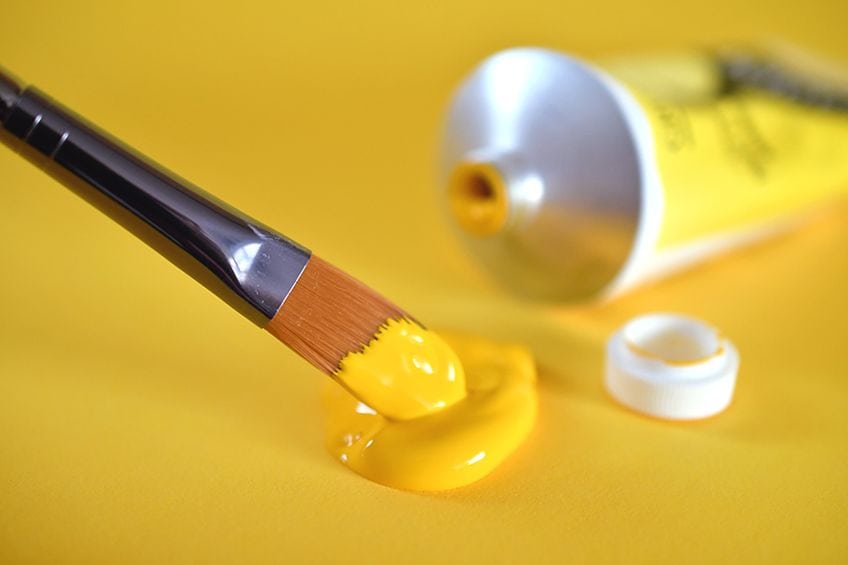
Best Affordable Acrylic Paints for Cardboard: MONT MARTE Acrylic Paint Set
The Mont Marte Acrylic Paint Set is perfect for many different types of surfaces including cardboard, canvas, leather, plaster, paper, plastic, and air-drying clay. The paint provides excellent coverage and has a nice creamy consistency. The paints dry quickly, so you can apply layers without having to wait hours. The set comes in 24 vibrant colors and 35 ml tubes at an affordable price.
- The creamy textured acrylic paints provide excellent coverage
- The paint dries quickly for easy layering without muddy colors
- Suitable for canvas, wood, cardboard, clay, leather, and plastic
PROS
- Value for money
- Good color selection
- Vibrant colors
- Can be used on many other surfaces
CONS
- Paint might seem too fluid for some
Best Quality Starter Oil Paint Set: WINSOR & NEWTON Oil Paint Starter Set
The Winsor & Newton Oil Paint Set is an excellent introductory set that provides paints with a good pigment load and offers great coverage. There are ten different color tubes of 37 ml of oil paint. This paint set is great for beginners and those with more experience. The price is more than your average hobby store oil paints, but the brand is well-known and offers high-quality products.
- The paints have high pigmentation for great coverage and tints
- Affordable and great quality, perfect for students or amatures
- Suitable for a range of different materials, including cardboard
PROS
- Excellent coverage
- Good pigmentation
- Great quality
CONS
- Limited paint colors
- Expensive
Best Spray Paints for Cardboard: KRYLON COLORmaxx Spray Paint
The Colormaxx Spray Paint and Primer offers great coverage and excellent color that is durable. The spray paint can be used on many surfaces like metal, wood, plastic, glass, ceramics, paper, fabric, craft foam, and more. The spray paint is easy to use as it has a bigger than average spray tip mechanism, and you can use the spray at various angles. The paint will dry to the touch in around 20 minutes and comes in various colors as well as finishes.
- Delivers premium coverage, superior color, and great durability
- Suitable for indoor and outdoor use on almost every material
- Spray paint includes and primer and paint for rust protection
PROS
- Great coverage
- Comes in various colors and finishes
- Comfortable spray tip
- Dries fast
- You can spray from any angle
CONS
- Oil-based, so you will need to work outside and use solvents for cleaning
These are only three options, there are so many paint products available on the market. For example, if you prefer using water-based spray paint, consider the Liquitex spray paint that is a low odor and also comes in different colors. Whatever your project, there is bound to be a paint product that suits your needs.
How to Paint Cardboard
Painting on cardboard is easy as long as you follow a few instructions and prepare the cardboard surface properly. Cardboard is basically heavy-duty paper, but it is not made to handle paints effectively. To create a lasting painted finish, you will need to treat the surface and apply a primer before painting, which will help to keep your cardboard art projects looking good for longer. The best paint for cardboard is acrylic paints applied with a paintbrush or sprayed on. Make sure to follow a few recommended instructions to get the best out of your cardboard art projects.

Preparing Your Cardboard Surface
Make sure to remove any dirt or dust from your cardboard surface using a cloth. You can then prepare a workspace for painting. Place some newspaper or a drop cloth on the floor or table to pick up any messes you might make. Working with corrugated cardboard is a better option than using more flimsy cereal boxes. However, if it is just to occupy the kids for a little, it does not matter what cardboard you use.
The thinner, more flimsy cardboard will simply become soggier when painted. When spray painting, it is best to prepare an area outside on some newspaper.
Applying a Primer Onto Cardboard
A latex primer or gesso primer can be used on the cardboard. The primer is generally a mixture of pigments, binder, and chalk that appears white when applied. You can add in an acrylic paint color if you wish. Put on the gesso using a sponge or you also get foam brushes that can do the job. Apply a coat horizontally, and wait for this to dry, then apply another layer vertically. Leave this to dry for around 24 hours before painting. So, you can do several cardboard surfaces and leave them until you are ready to paint.
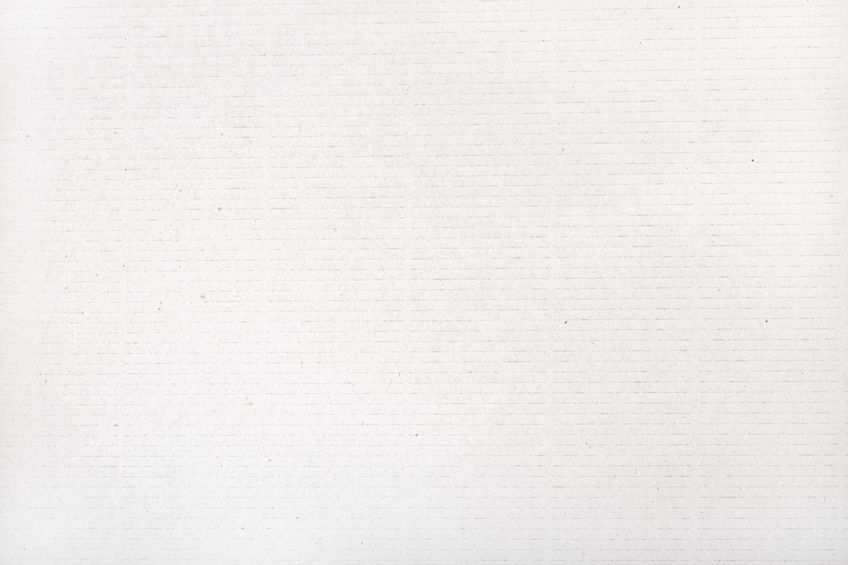
If you find the layer of gesso appears slightly rough after it has dried, you can smooth it by sanding it with some fine-grit sandpaper. You can apply more than two layers, but two should be sufficient for painting. Gesso can also be used as a primer on wood, plastic, and canvas surfaces. After you have applied the gesso, always clean your brushes or sponges with some water.
Painting on Cardboard
Once the gesso has dried, you can begin painting. Start applying a thin layer of paint using a clean brush and leave it to dry. The trick is not to use too much water when painting cardboard, to avoid the cardboard from warping. You can try using a dry brush; however, this might use too much thick paint. You could experiment a little to see what happens and to see what method works best. Squeeze the paint directly onto the brush or into a palette, not directly onto the cardboard.
Once your first thin layer of paint has dried, you can then apply a second layer. You might have to apply multiple layers and allow each of these to dry before you have your final art piece.
This process can be done with both acrylics as well as oil paints. Besides doing simple painted cardboard arts and crafts, many artists use cardboard as their substrate of choice for their paintings. If you want to simply paint your storage box, the best option is to spray paint cardboard box items as it offers the best coverage.
Sealing Your Painted Cardboard
You do not have to seal your painted cardboard, but to improve the appearance and protect your art piece, it is advisable. Sealing painted cardboard also helps to make the cardboard art projects last longer. However, this does cost more, and if you are not that concerned about keeping the painted cardboard, sealing is not necessary.
So, what do you use to seal paint on cardboard? The answer would be to apply varnish, which comes in either a brush-on or spray option. Varnishes also come in different finishes from gloss to matte. The best option for painted cardboard would be an acrylic varnish that is fast-drying, water-based, non-toxic, easy to use and can be applied to a variety of materials.

When varnishing, always prepare an area and lay down some newspaper, and make sure there is no dust on the cardboard surface. You can brush the varnish on in even strokes horizontally, from one side to the other. Once you have varnished the cardboard surface, leave it to dry for a few hours. Once the first varnish layer has dried, if needed, you can then apply a second layer, and allow it dry.
Spraying on varnish is preferably done outside, and using a mask, gloves, and protective eyewear. Mark off areas with masking tape where you do not want the varnish. Shake the spray paint for at least two minutes before holding the can a few inches away from the surface and spraying. Move in a parallel direction, from side to side until the entire surface is covered. You can wipe the nozzle in-between to prevent any clogging.
Apply a thin first coat, wait for this to dry, then you can add a second coat.
Difficulties with Painting on Cardboard
Since cardboard is delicate and needs to be primed, to prevent some problems from occurring. To do this, you must use the correct paint like acrylic paints, and avoid using watercolors. The problems mainly occur due to the water or moisture seeping through into the cardboard. Warping is a major problem when this happens.

How to Fix Warped Cardboard
Maybe you have added too much water and the cardboard has started to warp, you can still save it if the damage is not too great. First, you must dry the cardboard out, and then use a spray bottle with water to moisten the cardboard surface. Next, place the cardboard on a flat surface, making sure the curled piece is facing upward. Place some heavy items like books onto the cardboard, which will flatten it. Leave to dry for at least a day, or until the cardboard appears flat again, which could take up to three days or longer. Sometimes, simply being in a space where the humidity is high can warp cardboard. So, before you even start painting, the cardboard can be slightly curled. When have already discussed that priming the cardboard is important and using as little water as possible when painting.
Avoid using watercolor paints altogether. The best option is to use the thicker double or triple corrugated cardboard for painting purposes.
Easy Cardboard Art Projects
There are many different cardboard art projects to choose from. Maybe you want to simply paint on cardboard as you would on canvas, or do you need to create something out of cardboard for a school project? Whatever you do, following the easy steps for painting on cardboard is important. You can create so many interesting and unique effects by spray painting on cardboard. Below are a few ideas that can be enjoyed by both older and younger artists at heart.
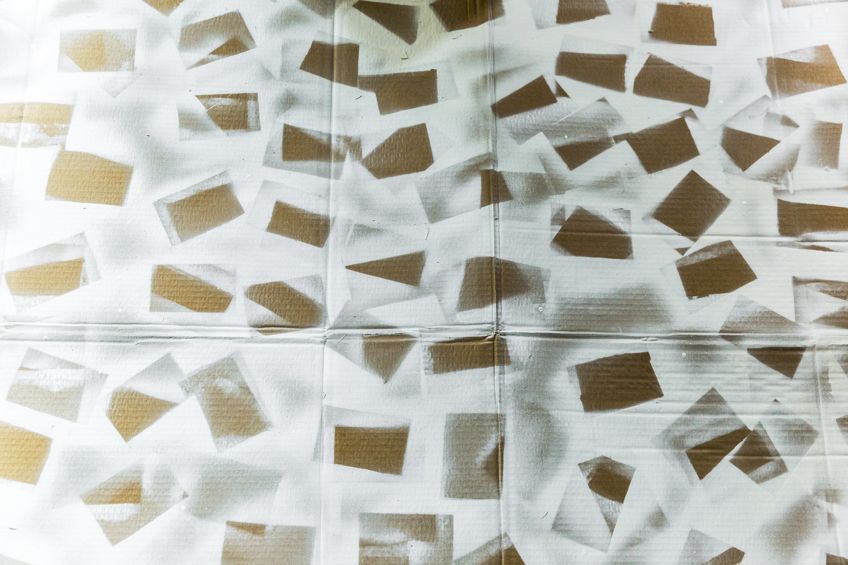
Cardboard Painting Tools
Not only can you paint on cardboard, but you can also use cardboard as a painting tool. This is an art project you can try with the kids as it is easy and fun to do. You need to get some sturdy cardboard pieces for this to work properly, as the cardboard pieces will be dipped into paint often. Simply cut various shapes, for example, take a rectangular piece of cardboard that fits into your hand, and on one end cut out a zig-zag pattern. The patterned end of the cardboard can then be used to paint on your surface.
You can cut out a variety of different designs from the cardboard, and then use these as tools to paint with.
Cardboard Printing
For this pained cardboard project, you are going to create some cardboard stamps. You will need some corrugated cardboard, acrylic paint, a roller, some glue, and white paper. This is also a fun kids’ activity. Take your cardboard and cut it into all kinds of shapes, then slowly peel away some layers until the ridges underneath are showing. Then take these shapes and glue each piece to another piece of rigid cardboard, the ridges facing outward.

Next, squeeze some paint onto a paper plate and use the paint roller to pick up some paint. Apply the paint roller to the ridges on the cardboard, then take this and press it onto a piece of white paper. For each stamp, you should preferably use a single solid color as applying other paint colors can create a muddy mess of color. Make sure to press firmly onto the paper, then peel off to expose your unique print.
Painted Cardboard Wall Art
Wall art is quite popular, and you can create your own wall art using painted cardboard. This is a cheap and easy way to make something unique for your home or as a gift. You need some sturdy cardboard for this project that is not warped or damaged in any way. Depending on the look you are going for you can cut out one or three back panels to act as the background for your wall art. These panels can be the size of an A4 piece of paper or larger if you wish.
Next, cut out a few different size rectangles, or multiple shapes, almost like a mosaic.
You make these shapes different sizes, and after you have cut them, make sure to trim the edges so all angles look neat. Play around with the design and various shapes on your flat panels before you begin to paint. You can then use some paints for cardboard on the different shapes, choosing your favorite colors and color palette to suit your décor. Do not forget to prime the cardboard surface with some gesso first and allow it to dry before painting.

You can also paint the flat panel pieces with gesso and paint, making sure to wait for each layer of paint to dry before painting on the next one. Next, glue the cardboard-painted shapes to your panels. You already know how to place the pieces and get the look you want, so this should not take long to finish. If you wish to create a gloss finish and protect the cardboard wall art, you can think of applying a sealing coat of varnish. You can apply the varnish to each piece before the gluing process. You will just have to wait for everything to dry before putting everything together. You can then place your cardboard art on the wall by using some 3M Command Strips on the back of each corner of the cardboard panels.
Cardboard Painting Tips
Painting on cardboard is fairly easy and cheap to do and is especially useful when doing arts and crafts with the kids. However, if you are an artist considering using cardboard as your canvas, things can get a little more tricky.
Below is a rundown of what can be done to create the best cardboard painting.
- Always make sure there is no dust on the cardboard surface before you begin prepping and painting.
- Apply primer with a synthetic polyester brush. You can use a gesso primer.
- Apply thin layers of primer, allowing each layer to dry before moving on.
- Always use the strongest, double, or triple-thick corrugated cardboard.

- Try using a dry brush to apply paints.
- Paint on multiple thin layers, waiting for each coat to dry.
- Avoid working in areas with high humidity.
- Never paint with watercolors.
- Apply a sealing coat of varnish for a durable finish.
- The cardboard needs to be primed and prepared before painting, so any water or moisture does not get absorbed and damage the cardboard.
You can create amazing cardboard art projects if you follow a few simple steps from priming to using as little water as possible when painting. By doing this, not only is it easy and fun, but cardboard painting is also perfect for both young and old.
Frequently Asked Questions
Can You Paint on Cardboard?
Cardboard is a cheap item that is easy to come by and can be used to create many cardboard art projects. However, it is still a type of paper that is porous and can become flimsy when too much water is applied. Even so, with the right methods, you can successfully paint carton boxes. You will need to make sure you prime the surface before painting. The best paint for cardboard is acrylic paint, but spray paints and oil paints can also be used.
Can You Use Watercolors on Cardboard?
No, watercolors should not be used on cardboard, even if the surface has been primed. This is because water or moisture is what wrinkles, warps, and damages cardboard. Watercolor paints need a proper surface that is made for watercolors to get the best results.
Is It Necessary to Prime a Cardboard Surface Before Painting?
To avoid damaging the cardboard, it is recommended you prime the surface first. However, if you are not going to be keeping your cardboard painting, no real preparation is necessary. Priming and sealing cardboard will go a long way in preventing any damage to the cardboard and makes sure you can keep the painting for a long time.
What Primer Should You Apply to Cardboard?
The most recommended primer is a simple gesso or a white acrylic gesso. This is made out of a pigment, binder, and chalk, which you can either purchase or make yourself. Instead of the white version, you can also add in a little bit of acrylic paint in your chosen color.
In 2005, Charlene completed her wellness degrees in therapeutic aromatherapy and reflexology at the International School of Reflexology and Meridian Therapy. She worked for a company offering corporate wellness programs for several years before opening her own therapy practice. In 2015, she was asked by a digital marketer friend to join her company as a content creator, and it was here that she discovered her enthusiasm for writing. Since entering the world of content creation, she has gained a lot of experience over the years writing about various topics such as beauty, health, wellness, travel, crafting, and much more. Due to various circumstances, she had to give up her therapy practice and now works as a freelance writer. Since she is a very creative person and as a balance to writing likes to be active in various areas of art and crafts, the activity at acrylgiessen.com is perfect for her to contribute their knowledge and experience in various creative topics.
Learn more about Charlene Lewis and about us.
